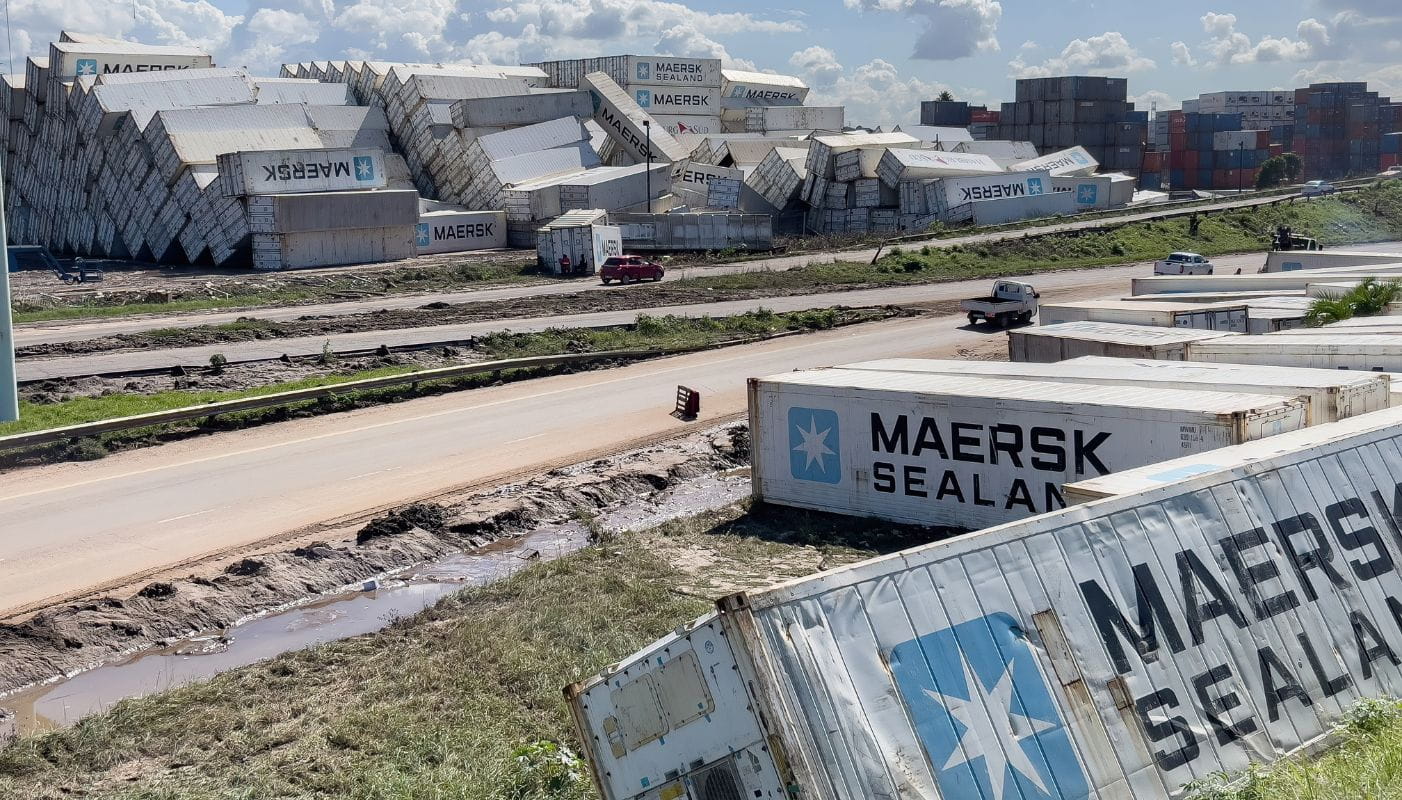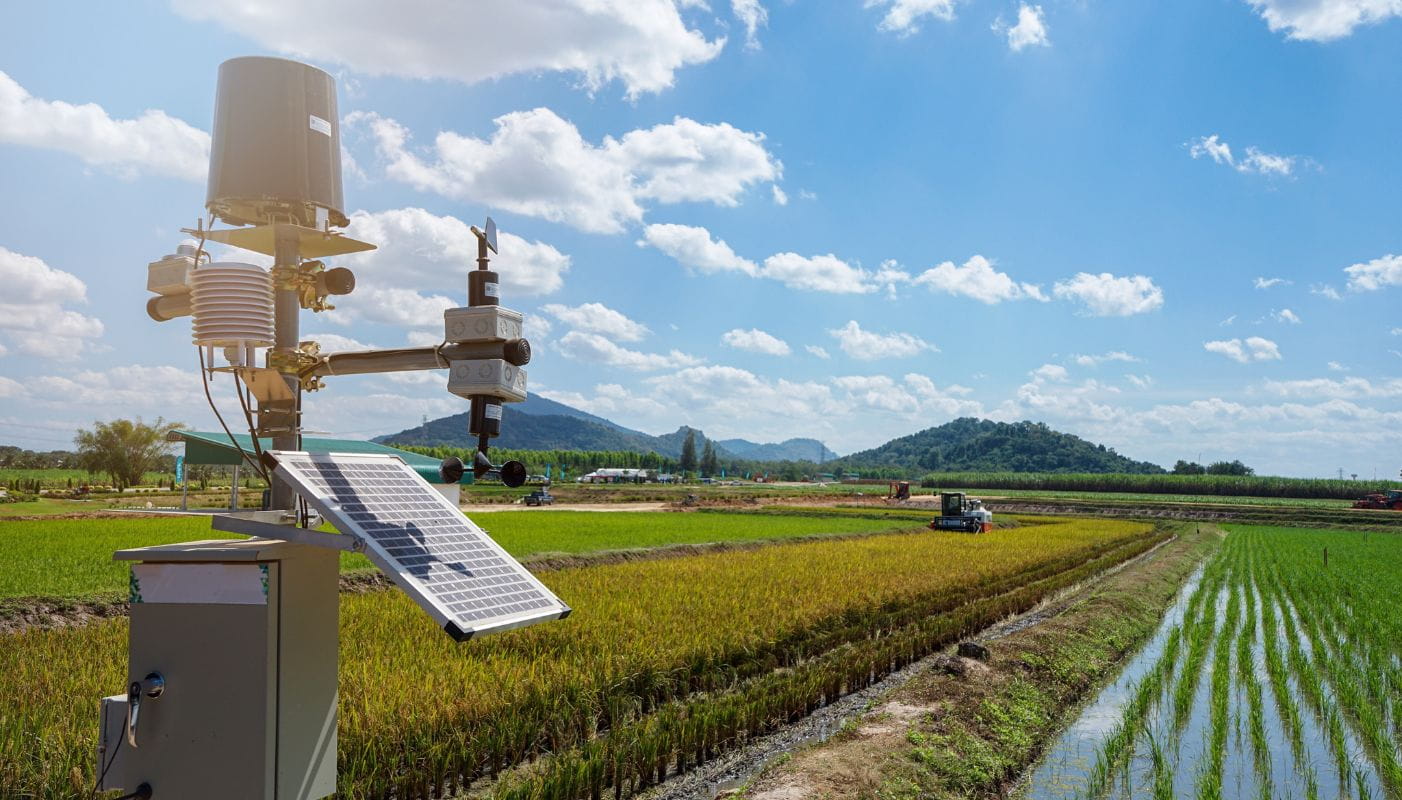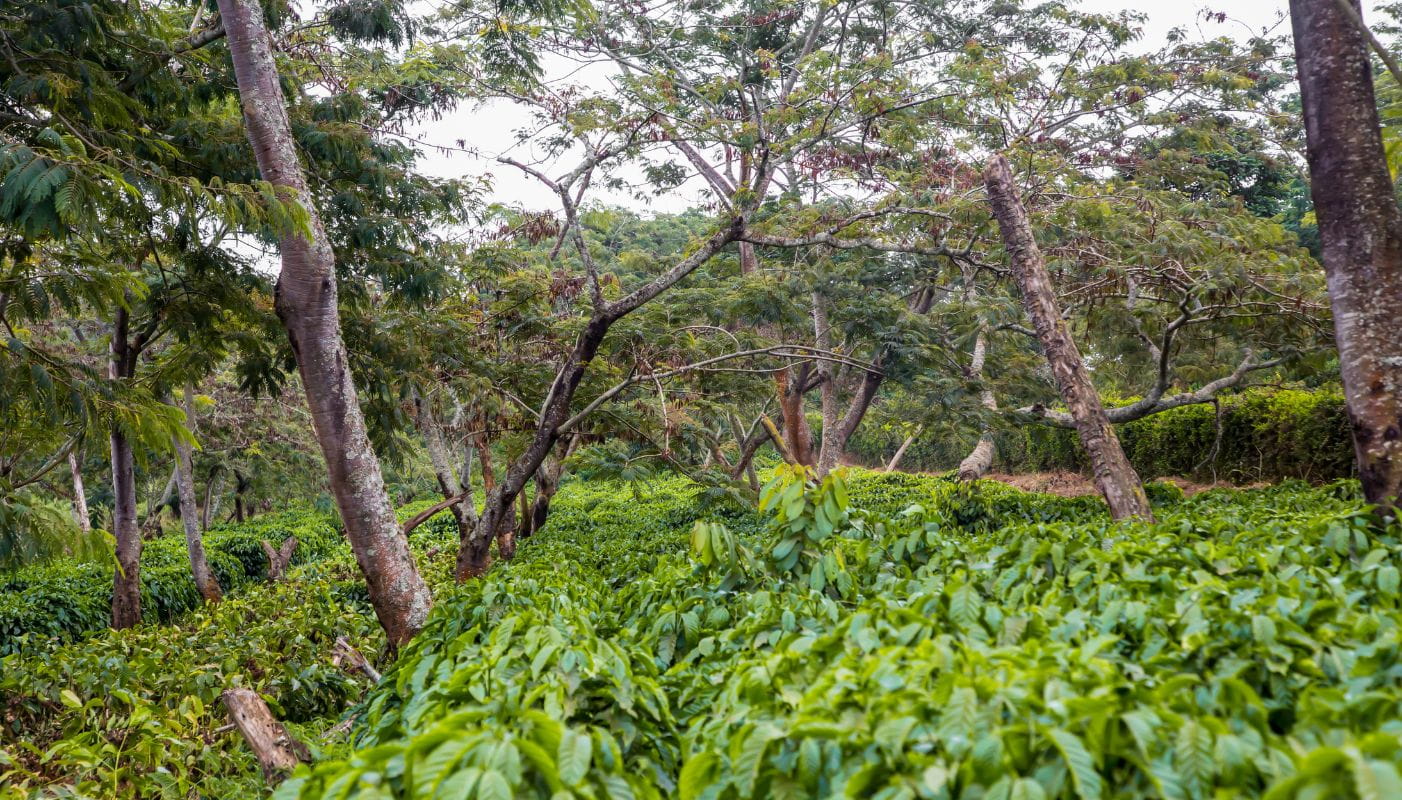Read the latest thoughts and analysis on breakthrough solutions driving impact for a sustainable future
Adapt to prosper: why investors are betting big on climate resilience tech

Every week, the news provides us with an urgent new reminder of the need for climate resilience solutions.
This summer has seen record-breaking heatwaves across Europe and China, while flash floods have struck North America and Pakistan. These have come at a great human and economic cost as lives are lost, families are uprooted, critical infrastructure is shut down, and global supply chains are disrupted with rippling effects. If current trends continue, companies worldwide could face profit losses of 5% to 25% annually by 2050.

Shipping containers displaced by severe storms and flooding, Durban, South Africa, 2022
This is not a challenging period that companies can grit their teeth and wait out. Every fraction of a degree of warming increases the intensity and frequency of extreme weather, and global warming is likely to exceed 3°C above pre-industrial levels by 2100.
We know that urgent and meaningful mitigation of climate change through decarbonization is critical for minimizing these disasters. However, mitigation alone is not enough. The world is already changing, with a certain amount of heating “locked in” by atmospheric carbon, and we must adapt to this change to secure our future. Resilience solutions like these make it possible to prepare for, bounce back from, and adapt to climate shocks. There is no question that climate resilience is a moral imperative, but it also presents a market opportunity.
No longer a niche investment
Conscious of the necessity of climate resilience, investors are already starting to funnel capital into technologies that help communities and companies adapt and face the realities of a warming world. The market is “primed for investors to act now,” according to a BCG report.
These innovations span every sector and range from the conceptually straightforward to the very cutting edge of technology. AI-enhanced modeling, for instance, makes it possible to more precisely predict the arrival of extreme weather events and respond to them. For instance, CENTAUR, already operational in Portugal, reduces the risk of flooding thanks to a network of sensors distributed across urban sewer systems to monitor water levels and operates a moveable gate to control flow. A number of African countries are exploring 21st-century genetic engineering to develop staple crops that are more resistant to extreme weather, particularly droughts. Elsewhere, innovative solutions are being used to make the built environment itself more resilient to climate change impacts. These solutions range from innovative new construction materials like permeable paving and hempcrete to reflective white paint applied to roofs to increase albedo.
This diverse family of technologies, once considered a niche in the green tech landscape, is now entering the mainstream.

Artificial intelligence is unlocking new potential insights from data gathered by weather sensors
There is compelling evidence that investment in resilience is not just urgently needed but among the smartest development investments available, with a World Resources Institute study finding that every $1 invested in adaptation and resilience generates more than $10 in benefits over ten years. The study, which analyzed 320 adaptation and resilience investments across 12 countries totaling $133bn, found that certain sectors, such as health and disaster risk management, hold the potential to generate even greater returns.
Global demand for investments in climate resilience and adaptation is set to rise to between $0.5tn and $1.3tn annually by 2030, according to the 2024 UN Adaptation Gap Report, driven by rising demand in both advanced economies and climate-vulnerable regions.
Look South to support inclusive development
The Global South is disproportionately affected by the heating of the planet, despite being responsible for as little as 8% of greenhouse gas emissions. Climate change could push more than 100 million people back into poverty by 2030, with the world’s poorest regions (sub-Saharan Africa and South Asia) most severely affected. The continued need for financial support for these countries, both to mitigate their own emissions and to build climate resilience, is now widely acknowledged. It is expected to be a top issue on the agenda for the upcoming COP30 climate conference in Belém, Brazil later this year. In countries where adaptation funding remains limited, climate adaptation and resilience solutions backed by venture capital have the potential to help fill critical funding gaps.
Investment in these solutions in the Global South offers investors a double dividend. It helps local communities and companies reduce their exposure to our changing climate, and it supports inclusive development. In Uganda, for example, a UN grant has given coffee farmers the means to invest in climate resilience measures such as agroforestry without putting themselves under direct financial stress.

Happy growing in the shade of a diverse tree canopy, coffee is well-suited to sustainable agroforestry
Redefining growth in a warming world
Today, climate shocks impact every level of the economy, from global supply chains and critical infrastructure to the traditional livelihoods that sustain the most remote communities. Climate mitigation and adaptation are recognized not as “nice-to-have” pursuits but as critical considerations when investing for sustainable growth. Multilateral banks, sovereign wealth funds, and other investors are increasingly treating climate resilience as a pillar of risk mitigation. For instance, the in-progress Climate Resilience Investment Framework from the Institutional Investors Group on Climate Change aims to guide investors in considering how climate risks may be managed to protect long-term financial returns.
Singaporean investment company Temasek has warned of economic losses related to climate change and said that “it is crucial to expand our focus beyond climate mitigation and enhance resilience.” The African Development Bank Group has pointed to the continent’s “enormous opportunity” to invest in climate resilience alongside climate change mitigation.
This reflects a deeper transition. Climate adaptation and resilience is not a retreat from growth, but a redefinition of it, as we rise to meet the challenges of a changing world.


